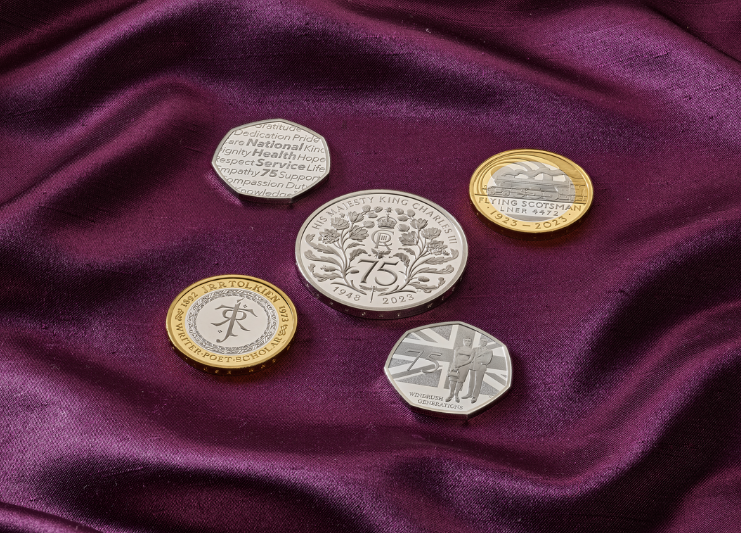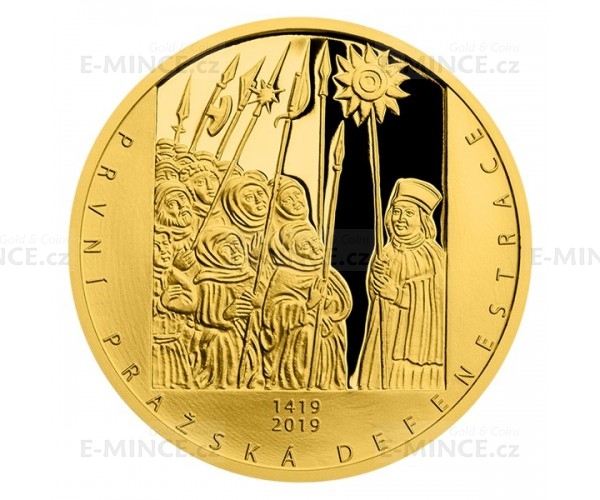Recommended News To Scanning Prague Mint Coins
Wiki Article
How Do High-Precision Cnc Machines Carve The Designs Into A Die Or Master Hub That Is Used To Create Gold Medals, Coins, Or Coins?
A CNC machine is crucial for the production of master hubs, or dies to be employed when making gold medals or coins. Here's a brief introduction to CNC Programming.
The CAD software (Computer Aided Design) is utilized to create an electronic 3D model of a coin or medal design.
Software for Computer-Aided Manufacturing (CAM) creates toolpaths and CNC instructions using a 3D model.
Select the appropriate material for die-cutting
To perform CNC machining, the master hub or die, which is durable and high-quality components like brass, steel or alloys that have been hardened will be used. They are able to stand up to high-pressure striking and ensure precise reproduction of the design.
Fixture and Setup
The material must be secured to the CNC machine's worktable or vice is crucial for precision machining. The correct fixing of the material is vital to stop vibrations and movement during machining.
CNC Machining Process
CNC machines utilize end mills as well as ball mills for cutting tools to cut designs into master hubs and dies.
The CNC machine follows the preprogrammed toolpaths, carefully removing material from the blank material block in accordance with the 3D model's specifications.
Different types and sizes of cutting tools are employed to create different dimensions, contours, and details of the coin or medal design.
CNC machines are controlled by computer algorithms to guarantee precision to micrometer tolerances.
Finishing and Refinement-
After the initial machining has been completed The die hub or master die is refined further.
Surface finishes may be improved through finishing or polishing surfaces using hand tools, or by making use of equipment that is specifically designed for the job.
Quality Control Inspection
The die or master hub must be inspected by using measuring tools like gauges or micrometers in order to ensure precision and compliance with specifications of the design.
Treatment and hardening (optional).
Some dies are subjected to further treatments like the hardening process and other surface treatments to increase the durability when striking.
CNC machines have the precision and ability to precisely replicate intricate designs on dies, master hubs, or other tools. These machined tools are critical to make gold medals and coins with precision, consistency and fine details. View the best CNC Machining Czechoslovakia gold coins blog examples including golden dime, gold quarter, gold and coin dealers near me, buying silver, gold sovereign coins, 20 dollar gold coin, coin buy silver, old silver dollars, gold piece price, gold coin store near me and more.

How Can A Janvier Machine Transfer A Gold Coin Or Medal Design To The Hub From The Master?
A Janvier is also known by the names pantograph and reduction machine, is used to transfer a design for a medal or coin from a master hub to a working hub. This is a brief review of the Master Hub Creation.
The master hub is the first coin die, or medal mold. It's made with precision CNC machining.
Janvier Machine Setup
The Janvier machine includes a stylus for tracing the design on the hub master and a cutter that reproduces the design.
The Janvier machine has a master wheel that is linked to the machine. It functions as a model, from which designs will be transferred.
The Design-
The stylus of the Janvier machine is able to follow the contours and specifics of the design on the hub master. When the stylus is moved along the surface of the master hub, it records the design's profile.
Reduce the Design-
The Janvier machine copies simultaneously the traced-out design onto the work hub. This is usually constructed with softer components than the master wheel, for example, steel or nickel.
The cutting tool is used to reduce or replicates the design onto the working hub at a smaller scale or reduced dimensions compared to the master hub. This is crucial for the process of coining because it allows medals and coins to be struck in the desired sizes.
Accuracy and Precision
Janvier machines operate with a high degree of precision to ensure a perfect transfer of the design from the master hub to the working hub. It recreates every single detail and contour with precision.
Quality Control -
The hub's working part will be subjected to quality control and inspection to ensure that it meets the specifications and precision for the strike process.
Further Processing-
The Janvier machine creates a working hub that is used in the medal and coin striking process. It serves as the mold or die for creating numerous blanks for coins or medals that have the design transferred.
Janvier is a crucial component in the process of minting because it has the ability to precisely replicate and reduce complex designs of medals or coins. These hubs will be utilized to mass produce coins or other medals by using the striking process. View the top janvier processing Prague Mint gold medals more tips. including gold price jm bullion, gold price apmex, buying silver bars, gold penny, 1 10 oz gold eagle, 50 dollar gold piece, 1oz gold price today, 20 dollar gold coin, congressional gold medal, medal gold medal and more.

What Is The Reason Dies Are Cleaned By Hand To Guarantee A Flawless Surface For Gold Coins And Medals?
Hand-polishing tools ensure a smooth and flawless surface for gold coins and other medals. A smooth surface permits better reproduction of intricate details and fine characteristics of the design onto created medals or coins.
Quality of the coin or medal is improvedA polished dash guarantees that the coins or medals have crisp, well-defined edges and relief. It improves the aesthetics and quality of the final product.
Reduced Wear and Tear Polishing may reduce friction during the striking procedure. Smooth surfaces reduce the chance of errors or inconsistencies being caused on the coin or medal struck caused by rough surfaces.
Consistency in Striking. Hand-polished dies create an identical striking surface, that ensures consistency throughout the entire process of minting. It is important to maintain the accuracy, depth and quality of the design across a variety of award or coins.
Longevity and Durability of DiesDies that are well polished are less prone to damage or wear when striking. The dies are stronger and last longer that allows a greater number of strikes to be struck without compromising on the quality.
Precision and Accuracy - Hand polishing allows the engraver to fine tune specific areas of dies, which ensures that the details are precisely reproduced on struck coins or medals. The accuracy of a final product is improved with this degree of precision.
Quality Control - Polishing is an integral part of the process to ensure quality. By inspecting the die before hand polishing permits the detection and correction of any defects or inconsistencies before striking.
Surface Finish - Polishing can give specific surface finishes or textures, enhancing the visual appeal or bringing unique features to the coins or medals.
Hand-polishing the dies for gold medals and coins is vital to ensure that the products created are of high quality, beautifully elaborate, and possessing a great aesthetic value. This step is crucial for the appearance, durability, and consistency of the finished product. View the best hand polishing Czechoslovakia gold coins site tips. including 1 oz silver price, gold penny, 1 4 oz gold coin, gold coin with angel on both sides, 1 oz gold bars, gold coins, american buffalo coin, liberty gold coin, 10 dollar gold coin, purchase gold coins and more.

How Are Gold Blanks Supplied And Stamped With High Pressure Into Coin Presses During Minting?
When minting, gold coins and medals are produced by pressing them with pressure. Here's a quick look at loading blanks.
The gold-colored blanks are inserted into the feeder system which is connected to coin presses. The feeder system is responsible for ensuring that blanks are continuously flowed into the machine.
Feeding Blanks Into the Press
The feeder system is able to guide the blanks one at a time into the chamber for striking of the coin press. This permits precise placement of the blanks.
Alignment and Positioning
In the press, blanks must be positioned perfectly within the area of striking, so that stamping can take place.
Strumming at High Pressure
The coin press is made up of two dies: one stationary and one that moves. The stationary die is the negative impression of the coin's design and the one that moves is the hammer that strikes the blank.
The die is moved to strike the blank with a significant force, which transfers the design onto the blank's surface. The force generated by the dies creates the design and creates the relief raised and details on the coin or medal.
Repeated Striking
Multi-strikes can be used to create more expensive coins or medals like proofs or collectors' editions. The result is a sharper and more defined appearance. Each strike fine-tunes the details in the blank.
Ejections and Collection
After they are struck, the coins and medals are ejected into trays. Control of quality is conducted to ensure that the designs conform to the specifications.
Post-Processing-
If the mint requires the process, they can apply additional procedures like edge lettering, reeding of the edges, or post-strike procedures.
The process of stamping under extreme pressure is vital in that it imparts the desired design on the gold blanks and transforms them into finished coins or medals ready for use in collection, circulation, or even commemoration. This process is extremely precise as any changes in alignment or pressure will alter the quality of the final coin. Read the most popular minting Prague Mint gold medals blog info. including 1 oz gold eagle, 1 oz gold bars, order gold coins, $5 gold coin, platinum coins, bullion dealers near me, olympic games gold medal, gold coin price today, 1 10 gold eagle, price for one ounce of gold and more.
